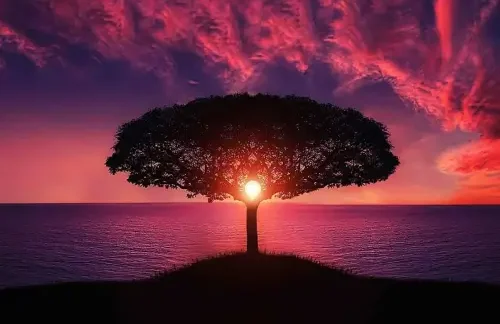The Levant: History, Culture, and Natural Beauty of the Middle East
The Levant – comprising Syria, Lebanon, Jordan, and Palestine – is one of the most culturally rich and historically significant regions in the Middle East. It’s not just a geographical expression, but a living tapestry of civilizations, religions, and landscapes that have shaped the human story for millennia. From ancient ruins and vibrant souks to snow-capped mountains and sun-kissed coastlines, the Levant offers a captivating journey for every traveler seeking a deep connection with history and humanity.
This region has long stood at the crossroads of civilizations. From the Canaanites and Phoenicians to the Romans, Byzantines, and Islamic empires, the Levant was a melting pot of knowledge, art, and commerce. Its cities—some of the oldest continuously inhabited in the world—still echo with the whispers of prophets, conquerors, poets, and traders. Walking through the narrow alleys of Jerusalem or Damascus, one can feel time folding in on itself.
Traveling in the Levant is not just a visual journey but an emotional and sensory one. You’ll hear the call to prayer blend with church bells, taste spices you’ve never known, and meet people whose warmth is as deep as their history. Whether you’re wandering through the ancient ruins of Petra, sipping coffee in a Beirut café, floating in the Dead Sea, or sharing a meal in a Jerusalem courtyard, the region offers unforgettable moments that touch both heart and soul.
Each country in the Levant brings its own flavor to the experience. Syria, with its layers of civilizations and bustling souks; Lebanon, where the Mediterranean meets the mountains in style and resilience; Jordan, a land of desert wonders and archaeological marvels; and Palestine, where faith, resistance, and heritage intertwine—together form a region that defies simplification.
In recent years, tourism has gradually returned to some areas, thanks to local efforts and international interest in cultural preservation. Despite political challenges, the resilience of the people and the enduring charm of the land continue to inspire visitors from around the globe. Infrastructure is improving, local guides are knowledgeable and passionate, and communities are welcoming and proud to share their stories.
The Levant is not just for history lovers. It’s a paradise for food enthusiasts, adventurers, spiritual seekers, photographers, and anyone longing for meaningful, authentic travel. In one journey, you can explore Roman temples, trek desert canyons, meditate in monasteries, and dance at a local wedding. It’s an all-in-one destination that rewards curiosity with wonder.
This article will take you on a guided tour through the highlights of the Levant. We’ll explore the major attractions in each country, delve into its culinary treasures, discuss the best times to visit, and offer practical travel tips. You’ll learn what makes this region so exceptional—and why, once you visit, it never leaves your heart.
Join us as we uncover the magic of the Levant: a land where every step tells a story, every flavor has a history, and every sunset seems to paint the sky with ancient memories.
Syria: The Pearl of the East
Syria, often described as the cradle of civilization, is a land of extraordinary depth. The capital, Damascus, is considered the oldest continuously inhabited city in the world. Its ancient souks, such as Al-Hamidiyah, are filled with the scent of spices, textiles, and history. The Umayyad Mosque stands as a masterpiece of Islamic architecture, inviting spiritual reflection and admiration. Moving north, the Crusader-era Krak des Chevaliers remains one of the best-preserved medieval castles in the world.

Syria also boasts natural wonders. In the west, green mountains border the Mediterranean, while in the east, the desert reveals the ancient ruins of Palmyra—once a major cultural and trade center of the Roman Empire. Despite recent turmoil, the essence of Syria’s grandeur continues to shine through for those who seek it.
Lebanon: Nature’s Paradise and Cultural Mosaic
Lebanon may be small in size, but its cultural and natural diversity is astonishing. A single day can take you from the snow-covered slopes of Faraya to the golden beaches of Byblos. Beirut, the capital, pulsates with modernity, creativity, and resilience. It’s a city of contrasts where history meets nightlife, and ancient ruins sit beside trendy cafés and art galleries.
Don’t miss the majestic Jeita Grotto, a network of limestone caves and underground rivers, or the towering Roman temples of Baalbek, a UNESCO World Heritage Site. The Cedars of God in Bsharri are a symbol of Lebanese identity, representing endurance and national pride. Lebanon’s culinary scene is equally rich—its hummus, tabbouleh, and manakish are just the beginning of a remarkable gastronomic adventure.

Jordan: Land of Legends and Adventure
Jordan offers one of the most unique combinations of heritage and natural beauty. The star attraction is Petra—”the Rose City”—an architectural marvel carved directly into red sandstone cliffs. This ancient Nabatean city is a UNESCO World Heritage Site and one of the New Seven Wonders of the World. Not far away, Wadi Rum’s dramatic desert landscape captivates with its vast dunes, rock bridges, and Bedouin traditions. It’s no wonder this area has served as the filming location for numerous sci-fi movies.

The Dead Sea, Earth’s lowest point, invites travelers for therapeutic floating and mud treatments. Mount Nebo offers stunning views and religious significance as the site where Moses is believed to have viewed the Promised Land. Amman, Jordan’s bustling capital, combines Roman ruins with a modern Arab vibe, creating a welcoming and exciting urban experience.
Palestine: Sacred Ground and Living Heritage
Palestine, revered for its spiritual and historical weight, is home to some of the most iconic landmarks in the world. Jerusalem’s Old City is a microcosm of faith, culture, and history. The Dome of the Rock, Al-Aqsa Mosque, the Church of the Holy Sepulchre, and the Western Wall coexist within mere footsteps—each a sacred site for millions. In Bethlehem, the Church of the Nativity marks the birthplace of Jesus Christ, drawing pilgrims from every continent.
Beyond the sacred, Palestinian cities like Hebron and Nablus offer bustling markets, traditional crafts, and architectural beauty. In the countryside, ancient olive groves and terraced hills reveal a strong connection to the land. The people’s hospitality is unmatched, often sharing stories over cups of mint tea and plates of maqluba or knafeh.

The Levantine Table: A Feast for the Senses
No journey through the Levant is complete without indulging in its legendary cuisine. Each country adds its own twist to regional staples, but the underlying themes of freshness, generosity, and community are universal. Mezze spreads overflow with hummus, labneh, baba ghanoush, and olives. Main dishes such as kibbeh, musakhan, and mansaf reflect centuries of culinary tradition and love for local ingredients.

Food in the Levant is not just nourishment—it’s a social and cultural ritual. Meals are often shared among large groups, accompanied by storytelling, laughter, and music. The warmth of Levantine hospitality is most evident at the dining table, where strangers become friends and every dish carries the taste of heritage.
Conclusion: The Levant—Where Time, Spirit, and Culture Meet
The Levant is not just a region on the map—it’s a living narrative that spans millennia. It holds the footsteps of prophets, emperors, scholars, and poets. It has seen triumph and turmoil, unity and division, yet through it all, the soul of the Levant endures—resilient, radiant, and rich in meaning. For the traveler, it offers far more than sightseeing. It offers immersion, emotion, and deep human connection.
Despite modern-day challenges, the Levant continues to shine through its people. Their warmth, pride, and enduring hospitality leave a lasting impression on anyone who visits. Whether you’re welcomed with a strong cup of Arabic coffee, guided through ruins by a passionate local, or invited to share a family meal, the authenticity of the experience remains unmatched. It’s not uncommon for a brief visit to spark lifelong fascination—or even transformation.
Nature here speaks with grandeur: from the jagged cliffs of Wadi Rum to the fertile plains of the Bekaa Valley, from the green hills of northern Palestine to the shimmering shores of the Mediterranean. These landscapes are not just beautiful backdrops; they shape identity, influence cuisine, and inspire creativity. The connection between land and life is deeply felt across the Levant.
Culturally, the region remains a beacon. Its music, poetry, embroidery, calligraphy, and cuisine continue to evolve while remaining firmly rooted in tradition. From the poetic verses of Mahmoud Darwish to the oud melodies echoing in courtyards, from the revival of old crafts to the rise of modern Arab cinema—this is a region constantly creating, even as it remembers.
For spiritual travelers, the Levant offers profound moments. Standing at the Mount of Olives, praying at the Umayyad Mosque, or walking the alleys of Bethlehem is not just a physical journey—it is a pilgrimage of the heart. Few places in the world allow you to witness so many sacred traditions converging in peace, despite historical complexities. Here, faith is not hidden—it’s woven into the air.
As global tourism seeks more meaning, connection, and authenticity, the Levant stands out as a powerful destination. It invites travelers not only to look—but to listen, feel, and understand. It challenges stereotypes, rewards open minds, and welcomes the curious with stories, food, and friendship.
So if you’re seeking a journey that stays with you—beyond photos and souvenirs—consider the Levant. It is a place where every sunset whispers history, where every street corner holds a surprise, and where every meal is a celebration of life. Come with respect, leave with memories, and know that part of your heart will always remain in the Levant.
The Levant is not just a destination—it’s a discovery of humanity itself.
Tea Benefits: Explore the Different Types of Tea and Their Effects






